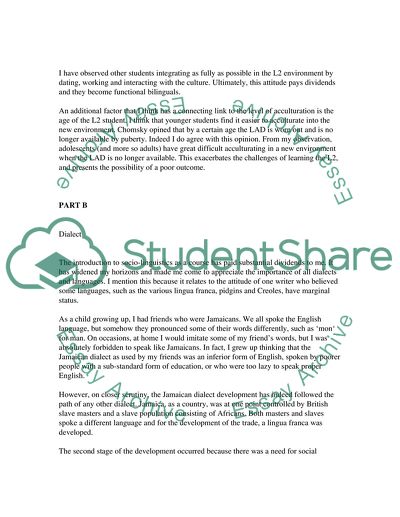Cite this document
(“The Connection between Bi-Lingualism and Biculturalism Essay - 1”, n.d.)
Retrieved from https://studentshare.org/literature/1548004-editing
Retrieved from https://studentshare.org/literature/1548004-editing
(The Connection Between Bi-Lingualism and Biculturalism Essay - 1)
https://studentshare.org/literature/1548004-editing.
https://studentshare.org/literature/1548004-editing.
“The Connection Between Bi-Lingualism and Biculturalism Essay - 1”, n.d. https://studentshare.org/literature/1548004-editing.


